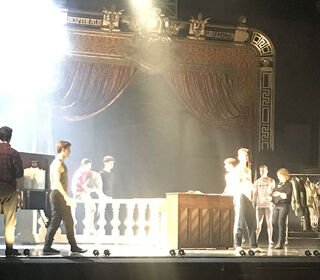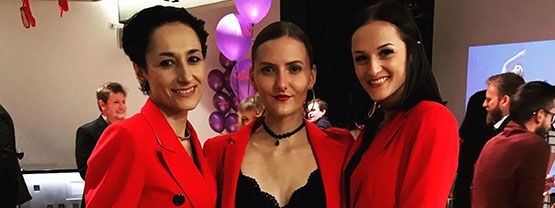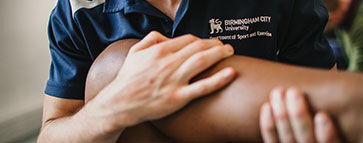
Blog

Studying a degree in sport can open up more doors than you might think. We spoke to Aisha James, Lecturer in Sports Therapy, about her time working in the arts, and how she combined her love for dance, and sports therapy, to get the best of both worlds.
“I’ve always had an interest in dance and theatre, and after I completed my undergraduate course in Sports Rehabilitation, and my postgraduate degree in Performing Arts Medicine, I was lucky enough to secure a job working at Pinewood Film Studios. My role was to provide therapy and rehabilitation services on set, on location, and in the clinic room at the studios.
I really enjoyed my time there, and had the opportunity to work on popular TV shows and blockbuster movies (which are being released later this year after a considerable delay – thanks to Covid-19). I was even a consultant for a TV show, which involved me coaching an actor who was playing a therapist to ensure they were accurate in what they did in the scenes.
The call of the West End
However, my passion has always been in dance, theatre and performance, so I decided to move to work with a company in the West End in London. Here, I worked on a series of shows including ‘White Christmas’; I went on tour with Sir Matthew Bourne’s ‘The Red Shoes’ as the lead therapist; and I worked with the original London cast of ‘The Prince of Egypt’ (until March 2020 when life as we knew it changed!).
During this time the variety of spaces I worked in varied dramatically. Sometimes I would have a dressing room fit for 10 people to work in, other times it was only just about large enough for the treatment table and myself. Some venues had baths that I could turn into ice baths while others only had step in showers. In those cases, I had to improvise by dragging large plastic bins of water and ice around to act as ice baths for the dancers.
Not your average 9-5 job
As I was on-hand in the theatres, it meant the dancers didn’t need to book appointments at a clinic outside of show times, and could just turn up and see me whenever they needed help. I learned to adapt quickly to working in the different spaces available (which varied from one theatre to another), and would frequent whatever space I could, from the rehearsal space, dressing rooms or even the stage!
I used my time wisely, and would sit in the auditorium to watch the dancers who were injured as they practised certain choreography. This allowed me to analyse their movements and see if there were any areas of weakness that stood out that I could work on them with. I really enjoyed this aspect of the job, however, I won’t miss trying to write notes in the dark!

Not only did I support the dancers, but I also provided vocal treatment for the singers. It was a great feeling to hear them belt out a number, or complete a full range siren after treatment with me, that they couldn’t hit prior, meaning they could go full-out in the show that night.
As well as support during rehearsals, I was also on hand to provide immediate care during the shows. This sometimes meant manipulating an ankle or providing taping treatments during quick changes whilst laying on the floor, in the wings, and in the dark, so the dancer could still get changed, and the hair and makeup people could do their jobs too. The main lesson I learned during this job was to expect the unexpected!
Work life balance
When shows went on tour, we became a big family and spend most of our time together. After the shows, there were often events that we got dressed up to go to, and we would spend time exploring new cities forming really close bonds. Even though this aspect was great, the work pattern meant that we weren’t able to see friends or family often which was tough from time to time.
A day in the life
A typical double show day on tour would start with arriving at the venue around 11am when I would set up for the day and then go and observe (and occasionally participate in) company class. After this, the cast would often have rehearsals, which I would observe if there were any dancers injured. If they were ok, I would head back to my dressing room and start treating others. The first show would start at around 2.30pm and this is the time when the dancers who were not on for that show would come to see me for maintenance treatments.
During the interval, I would often take ice and tape to the principles dressing room should they need it. The first show would finish around 4:30pm, at which point the dancers had around 2 hours off before they needed to be back for the 7:30pm show. Some spent it sleeping, some left the theatre, and some used that time to come and see me for treatments or to address any niggles that came up during the matinee. The second show would finish around 9:30pm and if there were no events afterwards, we would leave the theatre around 10pm to go back to our digs and get ready for the next day!
I feel privileged to have worked in the arts, and can’t wait to see singers and dancers performing to full crowds again. However, I am now relishing my new role teaching students on our BSc (Hons) Sports Therapy degree at Birmingham City University, and I hope that my previous experience can show them that there are a variety of avenues open to them upon graduation.
